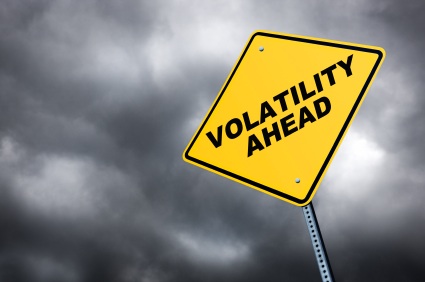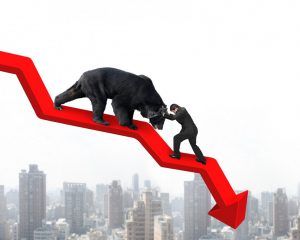Tag: good penny stocks
Should You Pay A Subscription for Good Penny Stocks?
Let’s face it, there are vultures in every industry – including good penny stocks. You see it a lot in the diet and health industry, companies promoting fads, in hopes you take the bait and bite. You might catch an infomercial on the weekends on that can’t-miss money making opportunity. When it comes to investing and trading, there  are hoards of individuals pitching you indicators, strategies, and alerts.
are hoards of individuals pitching you indicators, strategies, and alerts.
Does it ever make sense to sign up and pay for a subscription service pertaining to good penny stocks?
Before I share my opinion, let’s think about it for a second. The more competition, the more efficient the market is and the lower the profit margin. For example, let’s say you are at the supermarket and you’re interested in buying a package of hot dogs. You sift through the aisle and see that there are a number of different brands offering hot dogs. You’ll also notice that prices are relatively comparable. The reason being competition.
Now, imagine that you’re at Yankee Stadium and you’re hungry for a hot dog. You go to the vendor and notice that the price of a hot dog is the same price for 15 hot dogs at the grocery store.
Sounds crazy right?
Well, Yankee Stadium has no competition, you either buy their hot dog, or you don’t buy a hot dog at all. They have no competition, and therefore, they can set prices however they want. With that said, they have a very high profit margin.
Now, imagine that there is a trading strategy for good penny stocks that does very well in the market, meaning that it yields a good profit and has a high probability of  being successful. As more traders pick up on this, competition rises and profits become smaller and smaller. To compensate, traders will have to lever up just to get the same type of returns they were getting before. Eventually there will be too many traders in and the strategy has minimal effectiveness.
being successful. As more traders pick up on this, competition rises and profits become smaller and smaller. To compensate, traders will have to lever up just to get the same type of returns they were getting before. Eventually there will be too many traders in and the strategy has minimal effectiveness.
With that said, I’d be very cautious on anyone selling special indicators or signals. On the other hand, trading rooms, research, and even stock picking services can still be useful.
At the end of the day, there is only so much you can keep your eyes on, in respect to the market. The more qualified eyes, the better. You can learn a lot from good traders, as well as bad trader. Working on idea generation is one of the most important activities as a trader. You see, after a while, some strategies simply stop working, if you don’t work on ideas you’ll eventually be irrelevant. That’s why you’ll hear a lot of traders from the 1990s and 2000s struggle today, they never made the proper changes and are now obsolete – completely out of good penny stocks.
All in all, idea generation services are worth it, even if they are really bad in their picks. Because if they are awful, you can take the other side of their trades and be profitable. On the other hand, services that offer you how to trade or sell you a signal or strategy, the more users they get, the less effective they’ll eventually be.
Most professional traders trade in teams. They share their ideas with a select group of other traders they trust. Just make sure if you do decide to pay for a service, it’s something that fits your budget. Most services offer trials so make sure to test a bunch out before deciding what fits your trading style the most when trading good penny stocks.
Use Volatility To Trade Top Penny Stocks
They say volatility creates opportunities in trading top penny stocks. For those not familiar, volatility is something that is attempted to be measured, the most generally accepted method of measurement is the standard deviation. The standard deviation is expressed in annualized % terms, and tell us how much prices deviate from the mean.
In other words, standard deviation is a statistic that measures the amount of  variability around the mean.
variability around the mean.
Let’s say the price of a stock is trading at $10, and has a historical volatility of 30%. As mentioned earlier, standard deviation is measured in annualized terms. We would take the stock price and multiply it by 0.30, which gives us the number 3.
A one standard deviation move encompasses about 68% of the normal distribution. In this example it means that there will be a 68% chance that the stock price will be within $7 to $13 on the year. On the other hand when trading top penny stocks, to get a two standard deviation, we simply multiply our first figure by two. In this example it’s 6.
According to our historical volatility, there is a 95% chance the stock price will be trading within $4 and $16 on the year.
Now, we mentioned that historical volatility is expressed in annualized terms. However, you can convert that into a daily volatility if you wished when trading top  penny stocks. In order to translate the annualized volatility, take the number of trading days in the year and square root them. Generally there are around 252 trading days in the year, when you square root that, you get 15.87.
penny stocks. In order to translate the annualized volatility, take the number of trading days in the year and square root them. Generally there are around 252 trading days in the year, when you square root that, you get 15.87.
So, if we have an annualized volatility of 30% we take that number and divide it by 15.87. In return, we get a number of 1.89%. That means on average we can expect it move within a +/- 1.89% on any given day.
In general, volatility is mean reverting. Periods of high volatility are usually followed by periods of lower volatility, and vice versa. Traders can use this information to size their top penny stocks trades better.
For example, let’s assume volatility has expanded. If you’re aware of that, you might want to trade smaller to compensate for the wilder swings. In addition, under higher volatility, you can make or lose with less shares because the price swings are greater.
In most cases, volatility expands when stocks experience downward pressure. The move towards the downside is usually quicker, when compared to when stock prices  rise. When stock prices rise, they tend to grind up.
rise. When stock prices rise, they tend to grind up.
With that said, you can use volatility to gauge fear and greed in the market when trading top penny stocks. The most commonly used metric for the overall market is VIX. The VIX more or less tells us about the volatility in the S&P 500 index. A low VIX means there is little fear in the market, a higher VIX means there is fear.
In summary, knowing the volatility of a stock can help in your position sizing. You might be able to use those numbers to gauge sentiment in the stock as well. For a bigger picture perspective, the VIX can be used to measure gauge fear and greed in the overall market when trading top penny stocks.
Dealing With Drawdowns When Trading Good Penny Stocks
Make no mistake about it, if you trade good penny stocks for a long enough period, expect to experience drawdowns. We all go through periods when things simply don’t go away. However, there is a difference between going through a trading slump and having losing trades.
With that said, let’s take a look at both, and how they affect our trading.
Now, depending on your strategy the number of drawdowns will vary. For example, if someone primarily only trades M&A deals, they might make money 95 out 100  trades. However, those five times that they are wrong can be costly. On the other hand, a discretionary trader might be right 40-60% of the time, and still manage to be very successful.
trades. However, those five times that they are wrong can be costly. On the other hand, a discretionary trader might be right 40-60% of the time, and still manage to be very successful.
A drawdown is simply a trade that is closed out for a realized loss. On a more macro level drawdowns can also be expressed in time periods. For example, one could say they drew down on the day, week, or month if they ended up realizing losses.
As mentioned, drawdowns are a part of the game. It’s important to understand that trading good penny stocks, in many ways, is a probability game…there are very few, if any certainties. The sooner you accept that, the better you’ll be.
You can learn just as much from your losing trades as you can from your winning trades. If you’re going through a losing period, take a step back and start scrutinizing your previous trades.
Ask yourself, “Are these mistakes are avoidable, or am I just a victim of variance?” Sometimes, we let our emotions interfere with our game plan, which ends up being a costly mistake. Of course, it can be more than that.
 For example, maybe there has been some shift in the market, and your strategy or thesis is no longer valid. Maybe a CEO resigns, or a new government law is comes into effect. A number of factors could come into play that would affect the dynamics of a company and its stock price.
For example, maybe there has been some shift in the market, and your strategy or thesis is no longer valid. Maybe a CEO resigns, or a new government law is comes into effect. A number of factors could come into play that would affect the dynamics of a company and its stock price.
Is the root of the problem in your mechanics? Analyze your execution and see if there is anything is different. Have you not adjusted your position sizing for the added volatility? Go through your process and see if there is anything different and worth noting.
Maybe you’re going through some personal changes. Ask yourself if you’re getting enough sleep, eating well, or dealing with stressful relationships. These are things we don’t think about that could affect our trading of good penny stocks, but they can…therefore, they’re worth addressing and trying to correct any of these problems.
For some, a series of losses could lead to confidence issues. It’s generally best to focus on improving your process. For example, instead of trading your normal tier size, scale down the number of shares down and just focus on executing your game plan.
Do this until your confidence comes back. What you don’t want to do is trade bigger in order to regain losses. You want to be trading your biggest when you’re most confident in your ideas, not when you’re having doubts and are unsure. That’s the secret to making the most of good penny stocks.
